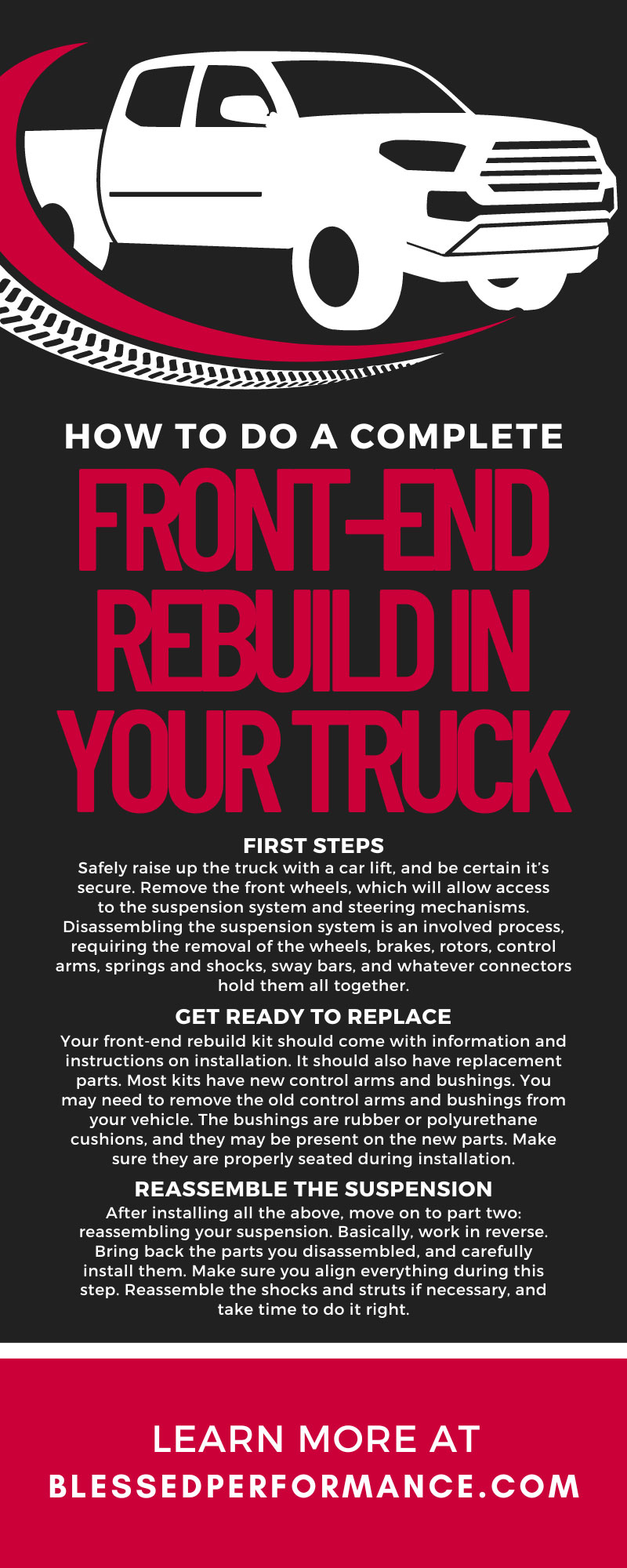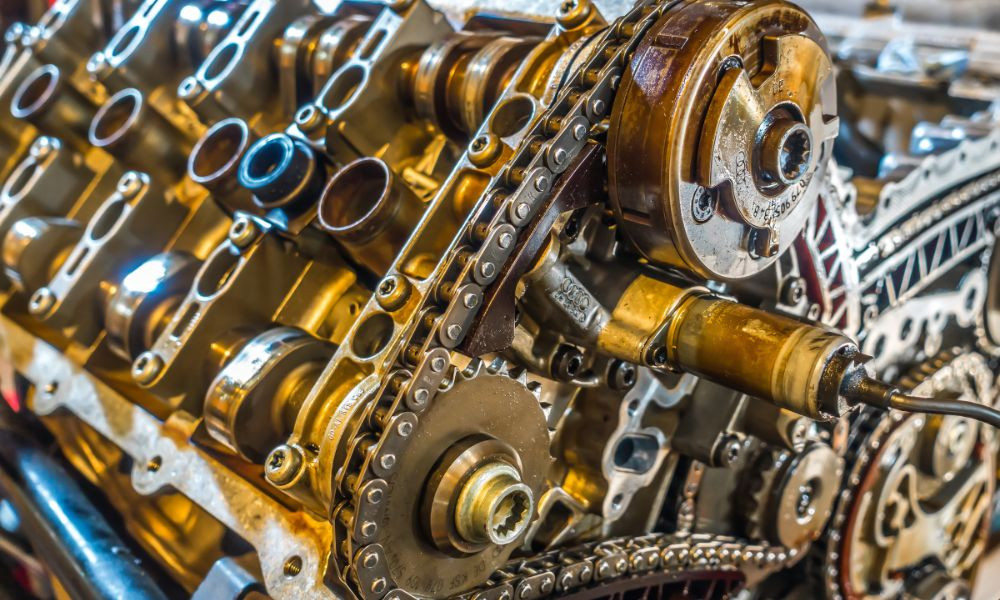How To Do a Complete Front-End Rebuild in Your Truck
Estimated 0 min read
Is your truck developing the shakes, and is the steering getting a little hard to handle? It might be time for a full front-end rebuild. The front part of any truck really takes it on the chin, so to speak. It faces rough roads, potholes, rugged off-road driving, and ongoing abuse over many years on the road. Fortunately, suspension systems and a plethora of other parts take the rocks and shocks.
Eventually, everything breaks down and needs replacements to ensure the driver’s and passengers’ safety and to keep the truck running smoothly. Instead of replacing parts as they fail, it’s a good idea to perform a comprehensive fix all at once. Here’s how to do a complete front-end rebuild in your truck.
Begin at the Beginning
Unless you have some serious mechanical chops, it’s better to hand off this project to an experienced mechanic with the talent and tools to do it right. However, if you have the wherewithal to perform the task, consult the owner’s manual and educate yourself on the inner workings of your truck. Practice safety, and prepare to invest a lot of time and money into the project. If you have any doubts, consult a mechanic.
Gather the Right Tools
Naturally, you’ll need the right tools to do the job. Any well-outfitted garage should have all the necessary tools for a front-end rebuild, though you may have to rent a few specialty tools to perform the change with little fuss. At base, you’ll need the following items:
- A selection of automotive wrenches and screwdrivers
- A hammer and rubber mallet
- A set of pliers
- Sundry suspension system lubricants
- Rust remover
- Your truck’s shop manual
Of course, you’ll also need a brand-new front-end kit for your specific truck model!
Review and Assess
Begin by reviewing the truck’s current setup. Does it truly need a full front-end rebuild? Push down on the front of the truck and give it a few bounces. If it makes strange creaking and clunky noises, the suspension might be on its last legs. Look under the hood and roll under the chassis to look for noticeable damage or wear and tear on the parts. If things look and sound good and there’s still some bounce left in the truck’s bungee, consider holding off on the rebuild. Still, if you have concerns, raise them with your mechanic or get ready to rebuild.
First Steps
Safely raise up the truck with a car lift, and be certain it’s secure. Remove the front wheels, which will allow access to the suspension system and steering mechanisms. Disassembling the suspension system is an involved process, requiring the removal of the wheels, brakes, rotors, control arms, springs and shocks, sway bars, and whatever connectors hold them all together. Place them nearby in the order you removed them, keeping track of each part. You may need to dispose of worn-out parts and clean others. During the entire project, you should keep everything organized.
Get Ready To Replace
Your front-end rebuild kit should come with information and instructions on installation. It should also have replacement parts. Most kits have new control arms and bushings. You may need to remove the old control arms and bushings from your vehicle. The bushings are rubber or polyurethane cushions, and they may be present on the new parts. Make sure they are properly seated during installation. This will keep things aligned and ensure suspension movement is smooth.
Follow this by installing the new ball joints. The current ones may be riveted in place. In that case, you might require an electric drill, cutting wheel, or air chisel to remove them. Install the new ball joints, and torque them according to the standards in the shop manual.
Next, address the tie rod ends. These parts aid in moving the wheels and facilitate turning by acting as a pivot between the steering jack, steering arm, and steering wheel. Remove the old tie rod ends, and replace them with the new kit parts. Securely fasten them since loose tie rods can alter the truck’s handling and lead to serious issues down the road.
Reassemble the Suspension
After installing all the above, move on to part two: reassembling your suspension. Basically, work in reverse. Bring back the parts you disassembled, and carefully install them. Make sure you align everything during this step. Reassemble the shocks and struts if necessary, and take time to do it right. You might face consequences for carelessness. Nowhere is this more important than when replacing your brakes. Reattach the various components, and confirm the brake lines are routed, the brake pads are aligned and sitting correctly, and all the other elements of the braking system are connected and intact. Finally, test them to be certain. You don’t want to be surprised by failing brakes on the highway.
Wrapping It All Up
At this point, it’s time to align the wheels. This should already be a standard periodic maintenance practice, but it’s especially important after performing a front-end rebuild. Let the folks at your favorite garage do this. They have the equipment to do the job correctly. Alignment won’t just ensure the wheels are on properly; it’ll also extend their life.
All Set?
Those are the basics on how to do a complete front-end rebuild in your truck. Now that you’re finished, it’s time for a test drive. Don’t peel out of the garage! Start slowly, and get a feel for the truck’s handling. Keep your ears open for strange sounds and your senses attuned to wobbles, bounces, bumps, and other tics that feel different from your truck’s usual performance. Hopefully, everything is operating within established parameters. If you’re noticing problems (especially if you did the rebuild yourself), make an appointment with your mechanic and have them take a look and make any necessary adjustments.
Have questions about front-end rebuilds and other big projects? Contact us for more information! We offer 6.0 Powerstroke parts and plenty of experience with trucks just like yours. We look forward to hearing from you!










